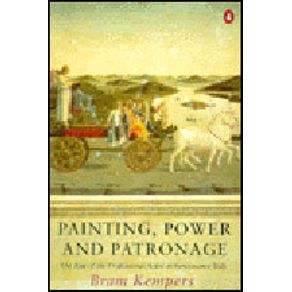The art of Renaissance Italy remains arguably the touchstone of Western art. It has produced many of the icons by which we define European culture, and our subsequent view of the role of art and of the artist in society has been profoundly influenced and shaped by the ideas of the period. In this stimulating and controversial book, a bestseller in the author's native Holland, Bram Kempers shows the period as a process of the developing 'professionalization' of the artist. Tracing the history of patronage - successively of the mendicant orders and city-states, the merchant families, the princely and ducal rulers and, finally, the great papal patrons, Julius II, Pius II and Sixtus IV - Kempers follows the story from Sienna to Florence, then to the court of Federico da Montefeltro in Urbino and, ultimately, to the heyday of the papal courts in Rome and the ducal court of Cosimo de Medici in Florence, which witnessed the supremacy of Michelangelo and the birth of the great Florentine Academy. A painter and sociologist at the University of Amsterdam, Dr Kempers shows how the unprecedented - and perhaps unsurpassed - creativity of Renaissance art was born of the dynamics of patronage and professional competition. This bred a fruitful balance between individual originality and social control, and out of a creative alliance of art and power a crowning period in the history of art flourished. With over seventy illustrations, including works from Duccio, Lorenzetti and Simone Martini through to Fra Angelico and Masaccio, Piero della Francesca and Raphael, the book is a major contribution to our understanding of the relationship between art and society. It demonstrates, to scholars and laymen alike, the profound influence of the Renaissance on Western ideas of art over five hundred years.


